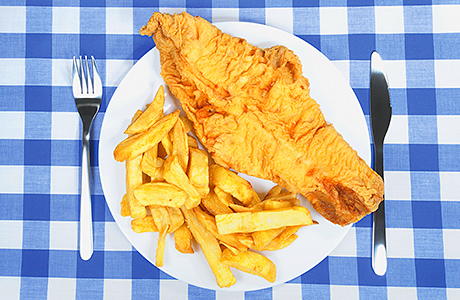
THE National Diet and Nutrition Survey (NDNS) results for Scotland have been published by FSA Scotland.
This comprehensive analysis of diet and nutrition for Scotland combines results from four years of the survey between 2008 and 2012 and provides a detailed picture of the diet and nutrition status of the Scottish population including a comparison with the UK by sex and age for intakes of selected foods and nutrients.
Overall the Scottish population is consuming too much saturated fat, non-milk extrinsic sugars (NMES) and salt and not enough fruit, vegetables and non-starch polysaccharides (NSP; a measure of fibre).

Human Nutrition Research provides the scientific lead for the NDNS Rolling Programme; the survey is carried out in collaboration with NatCen Social Research and, for this period, the University College London Medical School. The FSA in Scotland funded a boost of the NDNS from years 2008-2012 to provide representative data for Scotland. Increased NDNS sample sizes were also funded in Wales and Northern Ireland. These boosts are being published as separate reports in 2014-15.
The key findings in Scotland were as follows:
• Intakes of key foods (including: meat, oily fish, confectionery, biscuits, cakes and pastries) and nutrients (including: energy, total fat, saturated fats, trans fats, NMES, protein, vitamins and minerals) were similar in Scotland to those in the UK as a whole. The only consistent differences in intakes across the age/sex groups were for vegetables and fibre which were slightly lower in Scotland compared to the UK. Other small differences tended to be in a less healthy direction for Scotland.
• The analyses did not identify new nutritional problems specific to the Scottish population.
• The findings confirm that both the Scotland and the UK population are consuming too much saturated fat, non-milk extrinsic sugars (NMES) and salt and not enough fruit and vegetables, oil-rich fish and NSP.
• The lowest income group had a lower consumption of fruits and vegetables, fibre and some vitamins and minerals and a higher consumption of NMES in children.
• Blood analyses showed evidence of low vitamin D status in a proportion of adults and children across the UK, with a higher proportion in Scotland for most age groups compared to the UK.
The NDNS also revealed a greater level of alcohol consumption in Scotland compared to the rest of the UK, with male drinkers aged 19-64 consuming 38.3g of alcohol compared to just 29.2g throughout the rest of the UK.
The results also revealed that Scottish men aged 16-24 get nearly 7% of their energy from alcohol, compared to a 3% UK average. And for women too, the average level of alcohol consumption in the 19-64 age group was also higher in Scotland, at 19.2g compared to 18.2g in the rest of the UK. The results were published in late September 2014.












